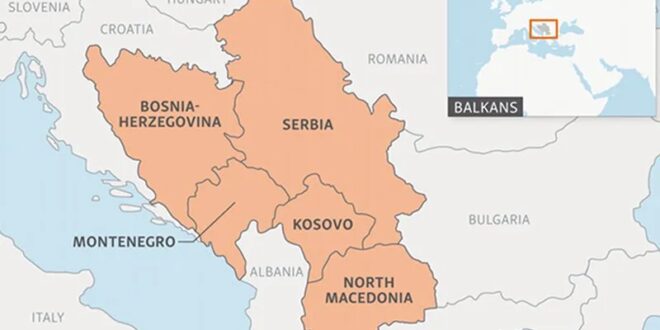The United States has welcomed an announcement by the commander of the Serbian Army that some troops have been withdrawn from the border with Kosovo, but Washington is still concerned about tensions in northern Kosovo, a State Department spokesman said.
“We will be looking for further confirmation. But if true, that would be a welcome step,” spokesman Matthew Miller told reporters on October 2 after Serbian Army chief of staff General Milan Mojsilovic told reporters in Belgrade that the number of troops along the border had been cut from 8,350 to 4,500.
Miller said the United States had not verified the withdrawal and that Washington continues to be “concerned about the cycle of rising tensions and sporadic violence in northern Kosovo.”
White House National Security Council spokesman John Kirby on September 29 called on Serbia to pull back what it said was a large military deployment at the border, calling it a “very destabilizing development.”
NATO last week ordered more troops to the area and demanded that Belgrade and Pristina resume an EU-facilitated dialogue as soon as possible as “the only way to achieve lasting peace,” alliance spokesman Dylan White said.
NATO still has 4,500 troops in Kosovo, and Britain said last week it would send additional forces to the mission, known as KFOR.
Germany is also closely monitoring the tensions between Serbia and Kosovo and will “react if necessary,” Defense Minister Boris Pistorius said on October 2, calling for a de-escalation of the situation.
He did not rule out increasing the contribution of German soldiers to KFOR, but said there were no plans to do so at the moment.
The Serbian military buildup came on the heels of an attack in northern Kosovo that left four people dead. Pristina blamed Serbia for providing financial and logistical support to the group of armed Serbs that clashed with Kosovar police. Belgrade denied the accusation.
Three attackers and one police officer were killed in the gunbattle on September 24 near the northern village of Banjska after the Serbs attacked a police patrol and then barricaded themselves in a Serbian Orthodox monastery.
Mojsilovic on October 2 denied Kosovo’s accusation that Serbia planned to annex northern Kosovo with the attack in Banjska.
“The Serbian Army is a serious, strong organization that does not tolerate lies,” he said. “I deny all allegations made by Pristina.”
EU spokesman Peter Stano said on October 2 that the Kosovar police had a mandate to investigate the attack, and Brussels expects Serbia’s “full and unconditional” cooperation.
Prime Minister Albin Kurti released images taken by a drone that he claimed showed Serbian paramilitaries in training ahead of the attack at Serbian Army bases. The images were taken around four days before the attack, he said on X, formerly known as Twitter.
“The attacks enjoyed the full support and planning of the Serbian state,” Kurti said.
Interior Minister Xhelal Svecla told the Koha Ditore newspaper that the images had been taken by the Serbian paramilitaries themselves and had been seized along with weapons by the Kosovar police.
The skirmish prompted international concern over the stability of Kosovo, a former province of Serbia with a predominantly ethnic Albanian population that declared independence in 2008.
Tens of thousands of ethnic Serbs who live in northern Kosovo do not recognize Pristina’s institutions, and they have often clashed with Kosovar police and international peacekeepers.
 Eurasia Press & News
Eurasia Press & News




